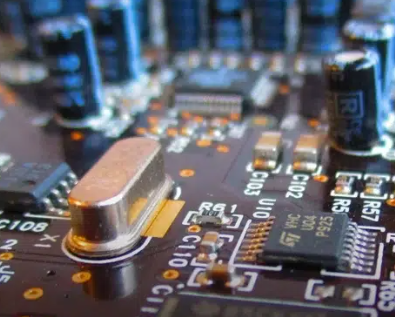Definition and characteristics of inductive load
Inductive loads and resistive loads are two common load types in electronic circuits. Inductive loads and resistive loads have different characteristics and working principles and can be distinguished by some key indicators.

This article will introduce the definition, characteristics, differences and applications of inductive loads and resistive loads to help readers better understand and distinguish between these two load types.
Definition and characteristics of inductive load
Inductive load refers to a load circuit composed of inductive components. An inductor is a device that stores and releases magnetic energy. Its characteristic is that it produces an induced electromotive force with a reverse voltage when the current changes. Therefore, inductive loads will produce inertial effects when the current changes, resulting in a phase difference between current and voltage.
The characteristics of inductive load are as follows:
Inductive components: Inductive loads are mainly composed of inductive components, such as coils, transformers, etc.
Phase difference: There is a phase difference between the current and voltage of an inductive load, and the current lags behind the voltage.
Inertial effect: Inductive loads have a certain degree of inertia to changes in current, and it takes a certain amount of time to reach a stable state.
Energy storage and energy release: Inductive loads can store electromagnetic energy and release energy when the current changes.
Definition and characteristics of resistive load
Resistive load refers to a load circuit composed of resistive elements. Resistive element is a device that consumes electrical energy. It is characterized by a linear relationship between current and voltage without phase difference.
The characteristics of resistive loads are as follows:
Resistive components: Resistive loads are mainly composed of resistive components, such as resistors, electric furnaces, etc.
Linear relationship: There is a linear relationship between the current and voltage of a resistive load, which satisfies Ohm’s law.
No phase difference: There is no phase difference between the current and voltage of the resistive load, and the current and voltage are in the same phase.
Energy consumption: Resistive loads consume electrical energy and convert it into heat or other forms of energy.
How to distinguish between inductive load and resistive load?
In practical applications, inductive loads and resistive loads can be distinguished by the following indicators:
Phase difference: The current of an inductive load lags behind the voltage, while the current of a resistive load is in phase with the voltage. By measuring the phase difference between current and voltage, you can determine whether the load is inductive or resistive.
Power factor: The power factor of inductive loads is usually a value between 0 and 1, less than 1. The power factor of a resistive load is usually equal to 1. By measuring the power factor, you can determine whether the load is inductive or resistive.
Power consumption: Inductive loads will produce large power consumption during operation, and part of the electric energy is stored in the inductive component. The power consumption of resistive loads is mainly converted into other forms of energy through resistive elements. By measuring power consumption, inductive and resistive loads can be distinguished.
Applications of Inductive loads and resistive loads
Inductive loads and resistive loads play important roles in different application scenarios:
Application scenarios of inductive loads include AC motors, transformers, inductors, etc. Inductive loads can play a role in filtering, energy storage, voltage transformation, and sensing in AC circuits. For example, in an AC motor, the inductive load can store and release energy to achieve the normal operation of the motor.
The application scenarios of resistive loads include electric heaters, resistance heaters, resistive loads, etc. Resistive loads can convert electrical energy into thermal energy for applications such as heating, welding, and drying. For example, in an electric heater, a resistive load generates a large amount of heat energy and converts electrical energy into thermal energy to achieve heating purposes.
Conclusion
In summary, inductive loads and resistive loads are two common load types in electronic circuits. By measuring indicators such as phase difference, power factor and power consumption, inductive loads and resistive loads can be distinguished. Inductive loads are mainly composed of inductive components and have characteristics such as phase difference and inertial effects; while resistive loads are mainly composed of resistive components and have the characteristics of linear relationship and no phase difference. Inductive loads and resistive loads play their respective roles in different application scenarios, and are of great significance to the understanding and application of electronic circuits.
在线留言询价
- 一周热料
- 紧缺物料秒杀
| 型号 | 品牌 | 询价 |
|---|---|---|
| TL431ACLPR | Texas Instruments | |
| CDZVT2R20B | ROHM Semiconductor | |
| MC33074DR2G | onsemi | |
| RB751G-40T2R | ROHM Semiconductor | |
| BD71847AMWV-E2 | ROHM Semiconductor |
| 型号 | 品牌 | 抢购 |
|---|---|---|
| STM32F429IGT6 | STMicroelectronics | |
| BP3621 | ROHM Semiconductor | |
| ESR03EZPJ151 | ROHM Semiconductor | |
| TPS63050YFFR | Texas Instruments | |
| IPZ40N04S5L4R8ATMA1 | Infineon Technologies | |
| BU33JA2MNVX-CTL | ROHM Semiconductor |
- 周排行榜
- 月排行榜
AMEYA360公众号二维码
识别二维码,即可关注


请输入下方图片中的验证码:






















